
Posts Tagged: fruit and vegetables
Landscaping? Think edibles
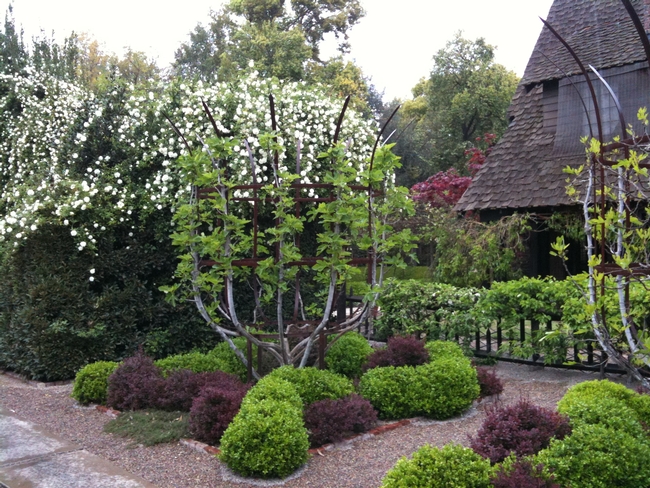
Some simple ideas for incorporating edibles into your landscape are to include fruit as part of your landscape plantings. You might consider an espalier of apples or pears along your western fence; plant an dwarf orange tree on a south facing wall as a large shrub. If you
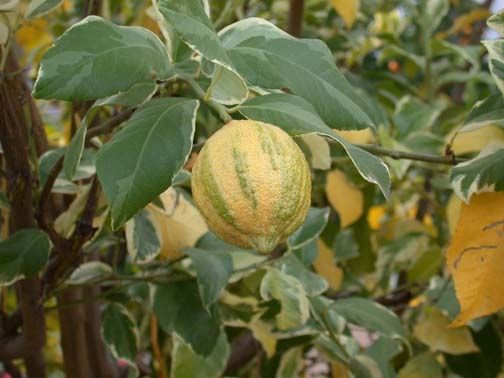
Shrubs with edible fruit are great too. Blueberries are lovely garden plants and you will be able to harvest quite a bit of fruit off of one or two plants. You could also plant a compact Stella Cherry (a self-pollenating variety) as a flowering deciduous shrub that will grow to about 10 feet tall but can be kept shorter with summer pruning. You can also grow a variety of citrus as super dwarf plants if they are grown on Flying Dragon Rootstock, which keeps their height to below 6 feet without a lot of pruning.
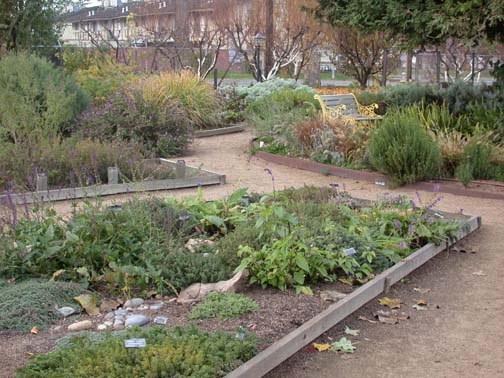
The key to edible landscaping is to change your ideas of what a landscape can be. Edibles don’t have to be grown in rows or in an area designated as the “vegetable garden." They can be incorporated into your flower beds as part of the ornamental garden. Compact, that is "determinant," tomato varieties that don’t require staking are perfect for sunny beds. If you have room for a ground cover in a sunny area, think of strawberries. If you want to cover a trellis or arbor, grapes can be good but only plant varieties listed as resistant to powdery mildew. Black Monukka is a nice seedless variety that has a medium-sized berry and is relatively pest and disease resistant. Consider that even if you don’t harvest everything yourself, you will have some food that you can share with your neighbors and friends.
For more information on how do grow edibles in your landscape, contact your local Master Gardeners. You can find them on the California Master Gardeners' websites.
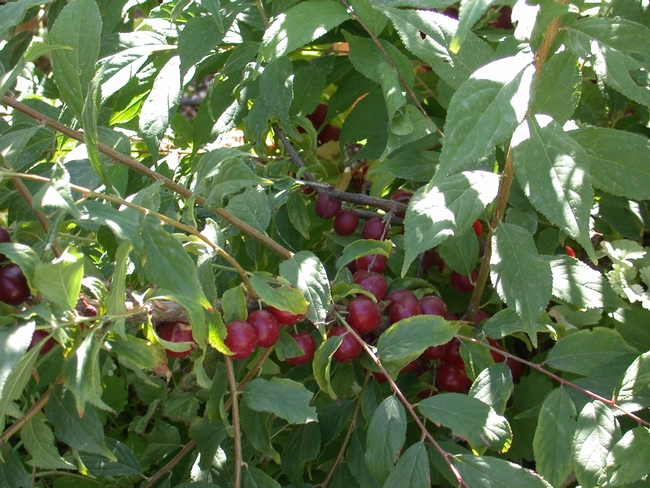
ripe plums
California's crop diversity is unmatched
On a recent trip to the East Coast, our first in almost 13 years, I reflected on our differing coastal experiences with agricultural diversity. Our travels took us through most of the mid-Atlantic farming region – Delaware, District of Columbia, North Carolina, Virginia, West Virginia and Pennsylvania – where we lived for almost 35 years.
We saw the familiar vast fields of corn, soybeans and alfalfa throughout most of the region. There were occasional pockets of other crops: apples, pears and grapes in the more northern parts; sorghum, sweet potatoes, peanuts and tobacco in the more southern states. We also saw occasional plots of sweet corn, green beans, oats and barley. But mostly we saw corn, soybeans and alfalfa.
We stayed at our cousins’ farm in Warriors Mark, Penn. Guess what they were growing – corn, soybeans and alfalfa. However, this year they were also growing Timothy hay for the local “hobby” horse population, as cousin Hank likes to call his high-paying customers. Our cousins have a huge vegetable garden, but do not farm vegetables because, they say: ”We can’t make any money from vegetables, they are not as profitable as the common three field crops." This seems to be the reasoning behind the tri-crop standard.
When we moved from central Pennsylvania to central California 15 years ago, we were intrigued, but mostly mystified, by the crops growing in fields near our home. With the help of new friends and colleagues, we eventually learned to identify fields of sunflowers, tomatoes, walnuts and almonds. We were astonished by the diversity of crops in our new home state, and intrigued by our lack of knowledge about crops we saw by daily. As we traveled throughout the state, our ability to identify roadside field crops grew. We saw acres of artichokes, lettuce, pistachios, figs, olives, kiwi fruit, avocados, all new as field crops to us. Using guides and manuals we found in the ANR Catalog for vegetables, fruit and nut crops, and agricultural production as well as the Fruit & Nut Research and Information Center website photo albums, we were able to identify most of what we saw. We also identified quite a few acres planted in the familiar corn and alfalfa, but hardly any soybeans.
We discovered what was growing in a nearby field when our eyes began to water and our throats close as a field of garlic was harvested. We had the same reaction to rice straw as it burned and canola harvested in a cloud of dust. The first time we saw acres and acres of sunflowers and an almond orchard in full bloom, we couldn’t help but smile. Our sense of smell also assisted in our discovery of newly harvested fields of squash, olives and tomatoes.
You can find more than the acres of corn, soybeans and alfalfa growing along the East Coast, but exceptions are usually planted in a very few acres and in limited locales. However, California’s crop diversity is readily apparent along every highway and byway in every county. Thank goodness!
Equivalent areas covered: mid-Atlantic states = 107,942,470 acres, California = 99,689,515 acres

Alfalfa stretches to the horizon in the Eastern U.S. (USDA photo)
California kids need more fruit and veggies
A report released by the Centers for Disease Control in September 2009 confirms what most moms already know - high school students don't eat anywhere close to enough fruit and vegetables. According to the report, only a third get two servings of fruit a day, and only 13 percent say they get three servings of vegetables.
Adults don't have much higher marks. The CDC said only 33 percent of adults get two servings of fruit, and 27 percent three servings of vegetables.
Compare that to the recommendation in the federal dietary guidelines presented on the My Pyramid Web site. The guidelines say, for ideal health, Americans should be eating 9 to 13 servings of fruits and vegetables every day.
Many UC Cooperative Extension offices offer the Expanded Food and Nutrition Education Program and the Food Stamp Nutrition Education Program, which teach low-income families ways they can add fruit and vegetable servings to their diets.
Here's a popular recipe shared by the UC program which takes only 15 minutes of prep and 20 minutes to cook. It makes use of a variety of winter vegetables available fresh in supermarkets this time of year.
Italian Winter Vegetables
Ingredients
2 cups water
1 cup broccoli florets
1 cup cauliflower florets
2 small zucchini, sliced
1 small onion, diced
3 stalks celery, chopped
1 (8-ounce) can tomato sauce
2 teaspoons basil
1 teaspoon salt (optional)
1 pound package any shape pasta, cooked
Directions
1. Put 1 cup of hot water in a saucepan.
2. Add vegetables and cook for 5 minutes.
3. Add tomato sauce, remaining cup of water, basil and salt.
4. Simmer until heated thoroughly.
5. Serve with cooked pasta.
6. Refrigerate leftovers.
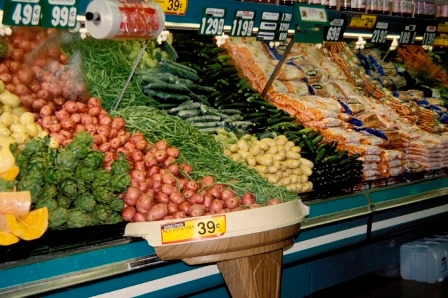
Supermarket produce.
